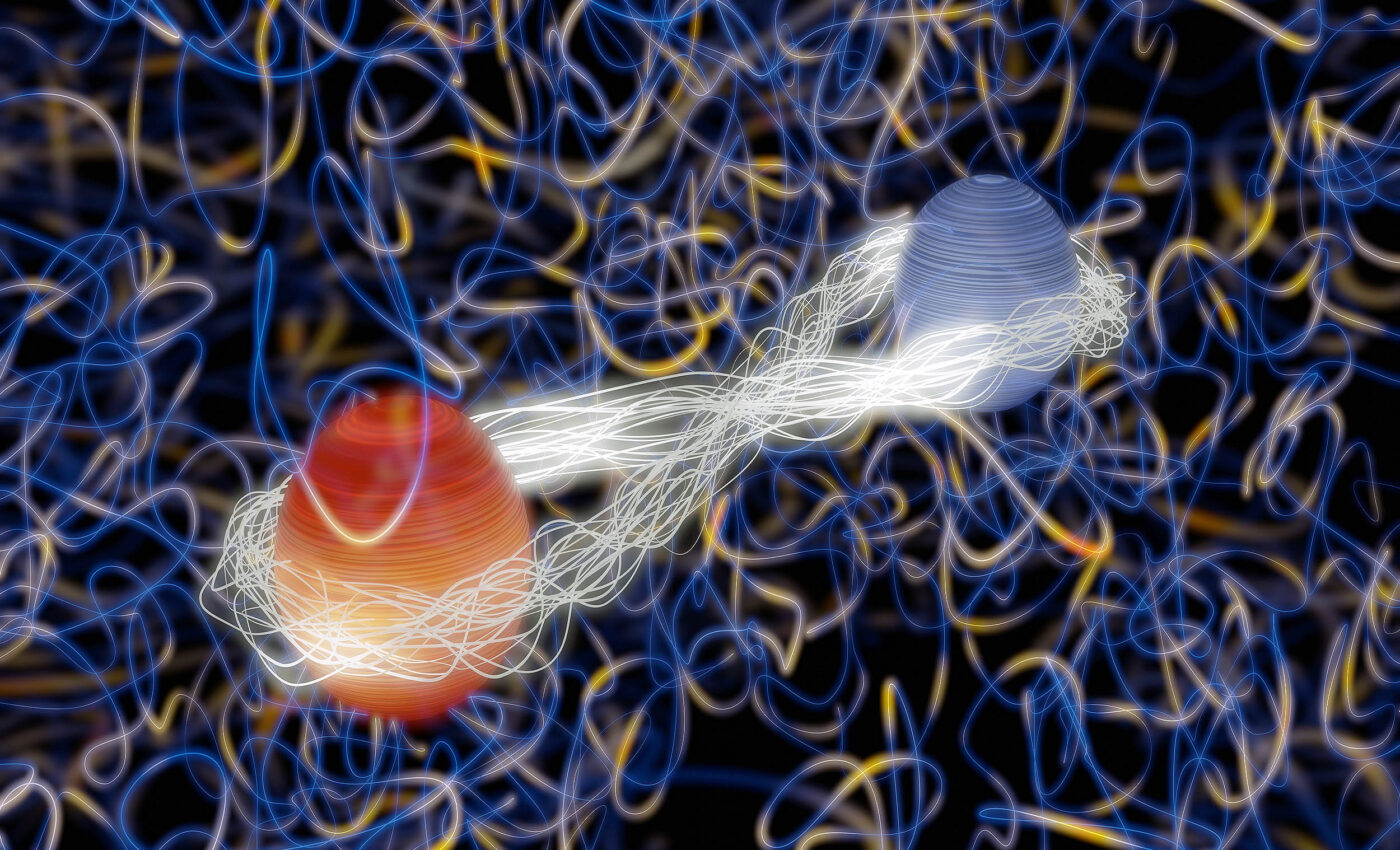
Bridging quantum and classical physics with nanoparticle entanglement
In the ongoing quest to delineate the boundaries between classical and quantum physics, new research has emerged that offers insights into this fundamental scientific challenge.
Published today, this study showcases a pioneering platform with the potential to significantly advance our understanding of where the quantum realm ends and the classical world begins.
Understanding quantum and classical physics
Quantum physics, the domain governing the behavior of particles at the minutest scales, introduces phenomena like quantum entanglement, which defies classical physics explanations.
Entanglement illustrates how particles can become so deeply connected that their properties are interdependent, regardless of the distance separating them.
Understanding these quantum mechanics not only fills existing knowledge gaps but also provides a more nuanced comprehension of reality. However, due to the diminutive scale of quantum systems, observing and studying these phenomena poses significant challenges.
Historically, quantum phenomena have been observed in progressively larger entities, ranging from electrons to complex molecules. Yet, the ambition to observe these phenomena in even larger objects introduces new challenges.
Levitation and light: Pioneering quantum observability
Levitated optomechanics, a field focusing on controlling high-mass objects at the micron scale in a vacuum, strives to observe quantum behaviors in substantially larger objects.
The difficulty lies in preserving the quantum characteristics like entanglement, which tend to diminish as objects increase in mass and size, giving way to classical behavior.
A team of researchers led by Dr. Jayadev Vijayan from The University of Manchester, in collaboration with scientists from ETH Zurich and theorists from the University of Innsbruck, has made a significant breakthrough in this area.
Observable quantum: Scaling up the invisible
Their experiment, conducted at ETH Zurich and detailed in Nature Physics, introduces a novel method to preserve quantum features amidst environmental noise.
“To observe quantum phenomena at larger scales and shed light on the classical-quantum transition, quantum features need to be preserved in the presence of noise from the environment. As you can imagine, there are two ways to do this- one is to suppress the noise, and the second is to boost the quantum features,” Dr. Vijayan explains.
“Our research demonstrates a way to tackle the challenge by taking the second approach. We show that the interactions needed for entanglement between two optically trapped 0.1-micron-sized glass particles can be amplified by several orders of magnitude to overcome losses to the environment,” he continued.
Technical innovations and methodologies
The experiment utilized two highly reflective mirrors to create an optical cavity, increasing the likelihood of photon interactions between the particles.
“The strength of these optical interactions, mediated by the cavity, remains constant regardless of the distance, enabling us to couple micron-scale particles over several millimeters,” adds Johannes Piotrowski from ETH Zurich.
This advancement not only propels us closer to understanding the quantum-classical transition but also opens the door to practical applications, especially in sensor technology. Dr. Carlos Gonzalez-Ballestero from the Technical University of Vienna highlights the implications.
Giant leap in particle entanglement
“The key strength of levitated mechanical sensors is their high mass relative to other quantum systems using sensing. The high mass makes them well-suited for detecting gravitational forces and accelerations, resulting in better sensitivity,” Gonzalez-Ballestero elaborated.
“As such, quantum sensors can be used in many different applications in various fields, such as monitoring polar ice for climate research and measuring accelerations for navigation purposes,” he concluded.
Piotrowski reflects on the excitement of pushing the boundaries of this nascent platform towards the quantum regime. The team plans to integrate these capabilities with established quantum cooling techniques, aiming to validate quantum entanglement further.
Successful entanglement of levitated particles could dramatically bridge the gap between quantum mechanics and classical physics, merging these two realms closer than ever before.
Next steps in bridging the quantum and classical worlds
In summary, the recent breakthrough in quantum physics research, led by Dr. Jayadev Vijayan and his international team, marks a significant advancement in bridging the gap between the quantum and classical worlds.
By amplifying the interactions necessary for entanglement in micron-scale particles, this study enhances our understanding of quantum phenomena at larger scales and paves the way for innovative applications in sensor technology.
As the team moves forward to integrate these findings with quantum cooling techniques, the potential for validating quantum entanglement in levitated particles holds the promise of revolutionizing our approach to physics, offering new insights into the fundamental nature of reality and opening up a myriad of practical applications across various fields.
The full study was published in the journal Nature Physics.
—–
Like what you read? Subscribe to our newsletter for engaging articles, exclusive content, and the latest updates.
Check us out on EarthSnap, a free app brought to you by Eric Ralls and Earth.com.
—–













